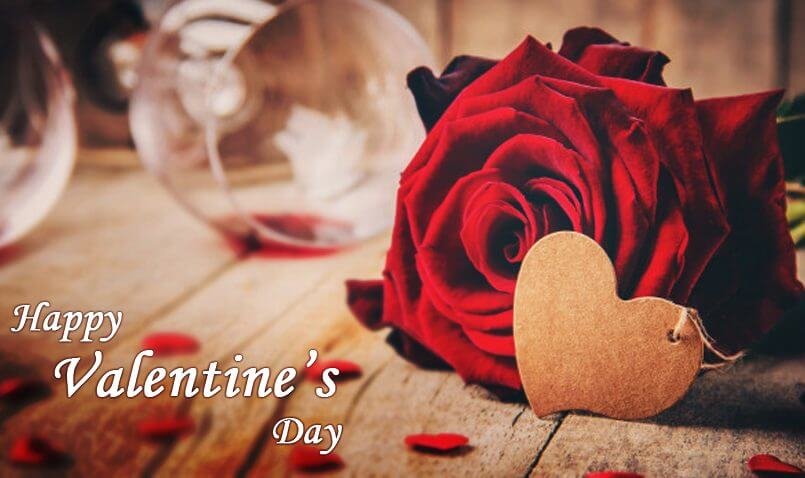Valentine’s Day: Igniting An Eternal Flame Of Love Full of Passion And Romance. 14th February.

VDay:
Valentine’s Day, celebrated on February 14th each year, is a day dedicated to love and affection. While some view it as a commercialized event, it holds significant cultural and historical roots. Originating from ancient Roman and Christian traditions, this special day of love has evolved into a global celebration of love, encompassing various expressions of affection and kindness.

The Origin of Valentine’s Day:
The origins of Valentine’s Day trace back to ancient Rome, where the festival of Lupercalia was celebrated in mid-February. This pagan fertility festival included various rituals and activities, including the pairing of couples through a lottery. As Christianity spread, the church sought to Christianize this pagan celebration, co-opting it into a day to honor St. Valentine.

The identity of St. Valentine remains somewhat mysterious, as there were multiple martyrs with that name in the early Christian church. One popular legend suggests that St. Valentine, a Roman priest, defied Emperor Claudius II’s decree against marriages for young men, secretly performing marriages for couples in love. Imprisoned for his actions, the priest reportedly sent the first “valentine” greeting to a young girl he fell in love with, signing it “from your Valentine,” a phrase that continues to be used today.
Over the centuries, this special day of love continued to evolve, blending Christian and Roman traditions. It gained popularity in the Middle Ages, with the idea that birds began to mate on February 14th, symbolizing love and fertility. By the 18th century, exchanging handmade cards and small tokens of affection became a common practice in England.

The commercialization of this special Day began in the 19th century when mass-produced cards became available. Esther A. Howland, known as the “Mother of the Valentine,” started the first mass production of valentines in the United States. Today, the holiday is a thriving industry, with the exchange of cards, flowers, chocolates, and gifts marking the celebration of love worldwide.

VDay is not limited to romantic love; it has expanded to embrace all forms of affection. Friends, family members, and even pets are included in the celebration. In schools, children exchange valentines with classmates, fostering a sense of camaraderie and friendship.

One of the most iconic symbols of Valentine’s Day is the heart. The heart shape, often depicted in red, has become synonymous with love and emotion. Whether it’s a heart-shaped card, a box of chocolates, or a piece of jewelry, this symbol transcends cultural boundaries and speaks to the universal language of love.

The tradition of giving flowers on Valentine’s Day also has historical significance. In the Victorian era, flowers were used as a means of expressing emotions and sentiments, as direct communication about feelings was often discouraged. Each type of flower conveyed a different message, a practice known as “floriography” or the language of flowers. Red roses, in particular, came to symbolize deep love and passion, making them the quintessential Valentine’s Day flower.

Chocolates, another staple of Valentine’s Day, have their roots in the belief that chocolate has aphrodisiac properties. The Aztecs considered chocolate to be a sacred elixir, and European aristocrats in the 18th century believed it could stimulate desire. Today, the act of sharing chocolates remains a sweet and indulgent expression of affection.

The celebration of VDay has also expanded to include romantic dinners and intimate getaways. Restaurants offer special VDay menus, and couples often take the opportunity to spend quality time together. Whether it’s a candlelit dinner at home or a weekend getaway, these moments contribute to the creation of cherished memories.

In recent years, the digital age has transformed the way people express their love on VDay. Social media platforms are flooded with declarations of love, heartfelt messages, and photos capturing special moments. Virtual gifts, e-cards, and online messages have become popular ways to connect with loved ones, especially for those separated by distance.

While VDay is a day of joy and celebration for many, it can also be a source of stress and loneliness for others. The societal pressure to conform to romantic ideals can create feelings of inadequacy or exclusion. However, there is a growing movement to redefine Valentine’s Day as a celebration of all types of love, promoting self-love, friendship, and familial bonds.

For those who choose to celebrate VDay as a couple, it provides an opportunity to reflect on the importance of love in their lives. It serves as a reminder to express gratitude and appreciation for the special someone who shares life’s journey. Whether it’s a grand gesture or a simple heartfelt note, the essence of the day lies in the sincerity of the emotions conveyed.

VDay is not confined to a single cultural or religious group. It has become a global phenomenon, with people from diverse backgrounds participating in the celebration of love. While the customs and traditions may vary, the underlying theme of expressing affection remains constant.

In conclusion, VDay is a multifaceted celebration that has evolved over centuries, blending anxieties traditions with modern expressions of love. From its origins in ancient Rome to the commercialized holiday we know today, VDay has become a global occasion to celebrate love in all its forms. Whether through traditional gestures like flowers and chocolates or modern digital expressions, the day continues to be a special time for people to connect, appreciate, and share their love with those who hold a special place in their hearts.













